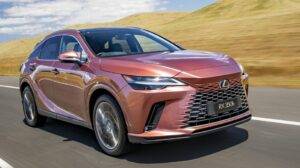Nikola Motors and Tesla are the dazzling stars among companies announcing long-distance electric trucks. However, there are also electric-powered trucks that are already on the road, including from established manufacturers such as Daimler. Hyundai plans to introduce the production version of a fuel cell truck later this year, and Nikola Motors is also working on this technology. Long loading times and a limited radius until the next charging stop are practical for commercial vehicles in regional distribution traffic, but not for heavy trucks for long journeys. There should be no way past the gas station here, be it a hydrogen column or diesel.
The mineral oil company and petrol station operator Shell is feeding the discussion about climate-friendly fuels, especially about liquefied natural gas (LNG, liquefied natural gas). A study entitled “Liquefied Natural Gas – New Energy for Ships and Trucks?” Was published together with the German Aerospace Center (DLR) and the Hamburg University of Technology (TUHH).
Great LNG potential in shipping
The research comes to the conclusion that I will save 132 million tons of greenhouse gas emissions by 2040 if 6,000 large ships worldwide are operated with LNG instead of heavy oil. A corresponding conversion of 480,000 trucks in the EU could result in a reduction of up to 4.7 million tons.
Dr. Jörg Adolf, chief economist at Shell, thinks above all of the waterways: “We see great potential for LNG in ocean shipping. This applies in particular to container ships, which have comparatively high fuel consumption due to their high power requirements. Passenger ships have a pioneering role. When LNG replaces heavy oil, there are high emission advantages ”.
DLR traffic expert Dipl.-Ing. Andreas Lischke hopes that climate-neutral bio-LNG will spread: “In road freight transport, LNG is particularly suitable for heavy trucks as an alternative to diesel fuel. In order to achieve high emission savings, however, LNG from renewable energies such as bio-LNG is required here.”











More Stories
Tesla Introduces 84-Month Loans in the US Amid Rising Interest Rates
Opel automobiles: 125 years of history and a bright future
The Cars That Go Out of Production in 2023